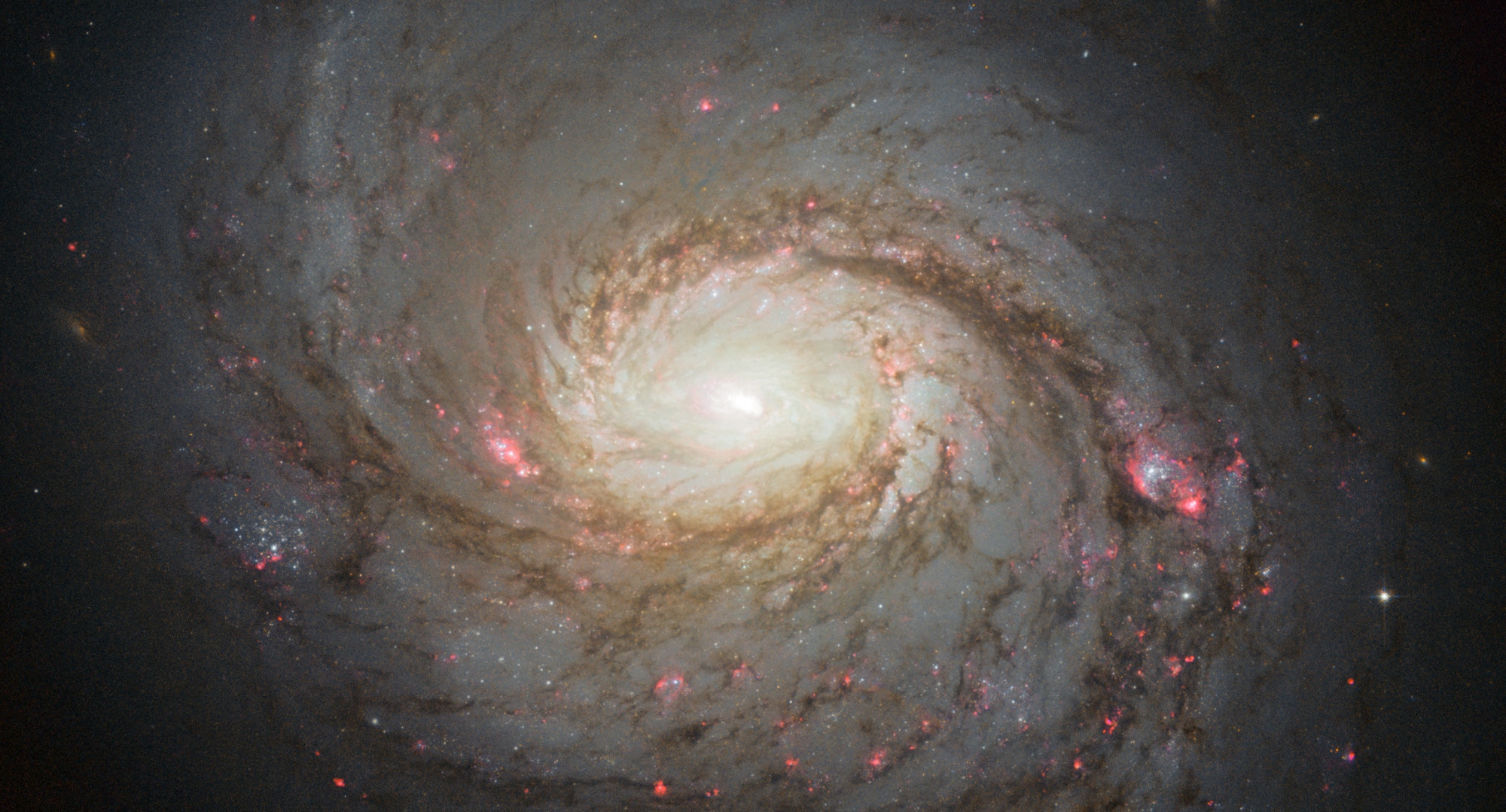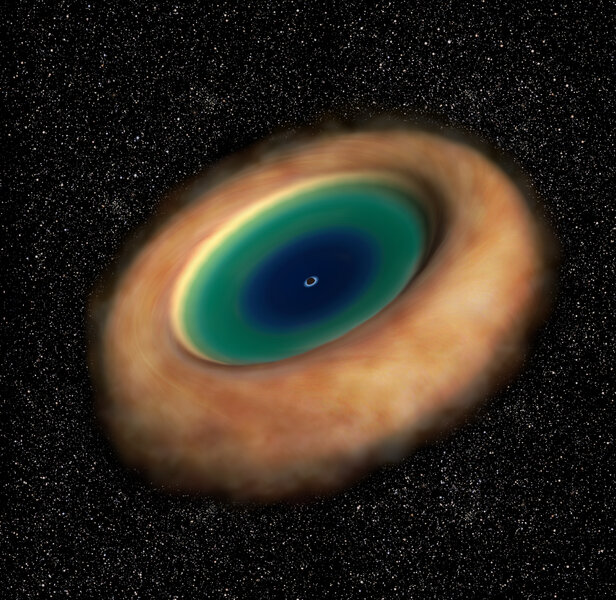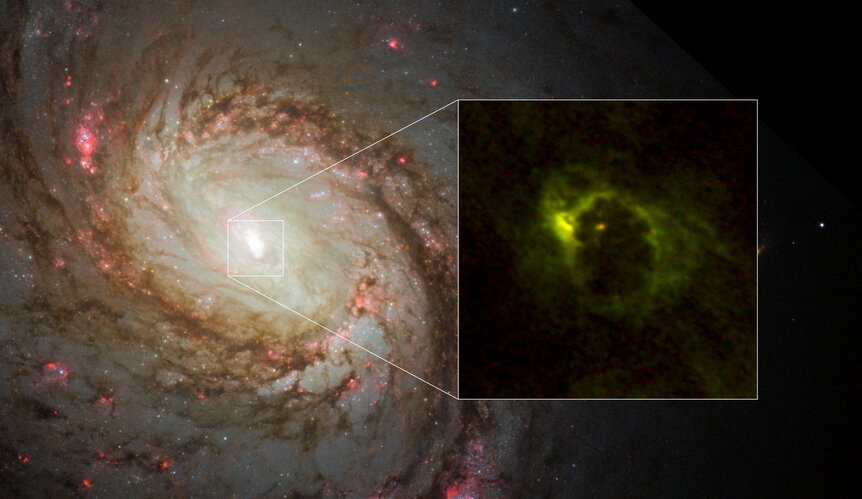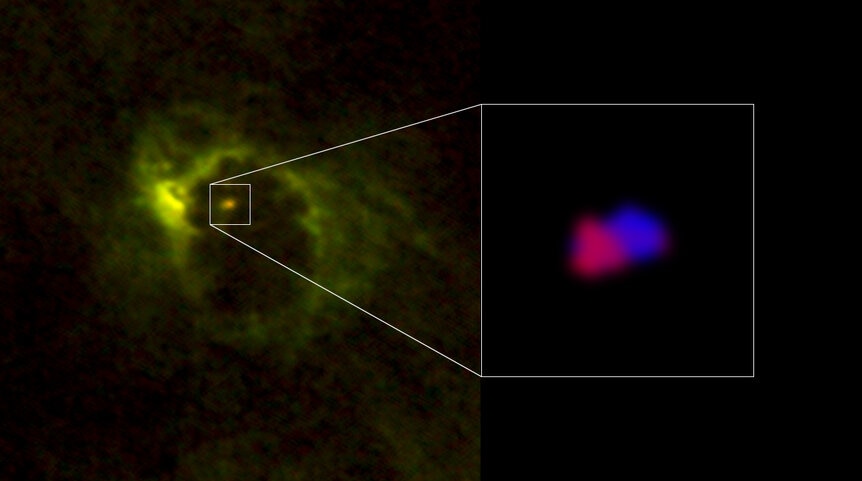Create a free profile to get unlimited access to exclusive videos, sweepstakes, and more!
Ring(s) around the black hole

There's a funny thing about galaxies: Sometimes, what you see depends on how you see it.
For example, there's a type of galaxy that we call active: It's a pretty broad term, but in general it means that the nucleus, the core, of the galaxy is blasting out a lot more energy than you'd expect if it were just a bunch of gas and dust and stars hanging out there.
It so happens that not too long after astronomers started figuring out some galaxies were active, we also discovered that every big galaxy has a really, really massive black hole in its core. We call these supermassive black holes (SMBHs) and they can be millions or billions of times the Sun's mass!
Can these two things be related? Stuff falling into a black hole picks up a lot of speed, and therefore a lot of energy. As it spirals in it forms a flattened disk (called an accretion disk), which heats up and can blast out radiation. Aha! Done and done, right?
Well, no. It turns out that not every active galaxy looks the same. Some pour out infrared light but not higher energy X-rays. Some show evidence of material moving very rapidly close in to the black hole, and some also show material moving far more slowly (and so, it's thought, farther out). There are a lot of different kinds of activities an active galaxy can partake in. So now what? How do we explain all this?
About 20 or so years ago astronomers came up with an idea: Maybe these galaxies are pretty similar in structure, but we see them tilted at different angles. When we see the material close to edge-on, all the high-energy stuff close in to the SMBH is blocked by the stuff farther out. When we see them at higher angles we can see everything going on.
There are more details, of course, but that's the general idea behind the Unified Model of Active Galaxies. One detail that is important is the postulated presence of a thick torus, a donut, of dusty material orbiting the SMBH outside the accretion disk. This is what does the blocking of the inner region. Great! Now all we have to do is see one.
There have been lots of them detected, but never in great detail … until now. Using the Atacama Large Millimeter/submillimeter Array (ALMA), astronomers have taken the clearest images of such a torus ever seen.
That image shows M 77 (also called NGC 1068), a spiral galaxy about 45 million light-years away. That's actually pretty close as galaxies go, so we get a pretty decent view of it. It's also one of the nearest active galaxies to us, and a prototype for one of the active galaxy flavors called a Type II Seyfert, one where we see slower moving material and lots of infrared light.
ALMA sees in light even lower energy than infrared. Some molecules emit this kind of light, including hydrogen cyanide (HCN) and formyl (HCO+), and these simple molecules should exist deep in galactic cores, giving us a tracer of the structure there.
What the astronomers saw in M 77 was a large horseshoe/ring of gas and dust stretching over a thousand light-years across, and a much smaller ring just about 40 light-years wide. This inner ring is actually the gas and dust torus partially obscuring the SMBH in the center of M 77! They found, using the Doppler shift of the light emitted from the gas inside the torus, that it's rotating quite rapidly, about 20 kilometers per second, even though the material at that speed is about 10 light-years from the black hole. To give you a sense of scale here, the Earth orbits the Sun at about 30 km/sec, but it's only 150 million km from the Sun. This material in the torus is 100 trillion km from the central black hole! That's about a million times the distance of the Earth from the Sun. A black hole's gravity is strong.
Which actually brings up something a bit weird. Working backward from the velocity (assuming the material orbits simply due to the black hole's gravity), they derive a mass of the black hole of about 1 million times the mass of the Sun. However, several other methods get a mass ten times higher! This means the gas is not moving only under the influence of gravity, but may be very turbulent, messing with the calculations.
Which brings up a second weird thing: When they look at the rotational directions of the inner and outer rings, they're moving in opposite directions. If material is falling in from the outside, then it should all be spinning the same way, like water down a drain. Why are they different?
The astronomers postulate that M77 may have suffered a collision with a smaller galaxy sometime in the past. This jibes with other studies that show the same thing; M 77 ate a smaller galaxy (or more than one) a few billion years ago. As the smaller galaxy was torn apart and "digested," this could have disturbed the material falling to the center of M 77, churning it up, and causing the two rings to move in opposite senses.
In fact, it's thought that many active galaxies may be the way they are because of such collisions. The gravitational interaction of two galaxies can dump a lot of material toward the core of the bigger galaxy, which then falls toward the black hole, creates the accretion disk, and turns the otherwise quiescent galaxy into an active one. This isn't true for all active galaxies, but it does seem to be a general truth.
Thinking back on this, back when the Unified Model came out I was working on the public outreach parts of a few high-energy missions (like Fermi, XMM-Newton, and others), designed in part to observe active galaxies. We started developing diagrams, web pages, student activities, and more to describe it. I was very impressed with how the model cleaned up a lot of problems we were having then with figuring out all these different flavors of active galaxies. I still am. It's not a panacea; there are plenty of details astronomers still argue over, but it does appear to cover a lot of territory. There will always be exceptions to the rule, and some galaxies or even classes of galaxies that still don't behave well, but that's always true whenever a new idea comes along that ties things together. It doesn't mean the idea is wrong, just that you have to be careful around the edges.
But it's one of the things I love about science. We look around and see a dizzying, bewildering variety of behaviors from everything in the Universe. But what we've found over the centuries is that a lot of this is explained by a handful of simple rules. You can get astonishingly complex behavior with these basic rules, too.
Complexity emerges from simplicity. It's another basic rule of the Universe, and one we see played out over and again at all scales, from the quantum to the cosmological. M 77 and its black hole, rings, and light-emitting molecular rings are just another piece of this wonderful tapestry.

















